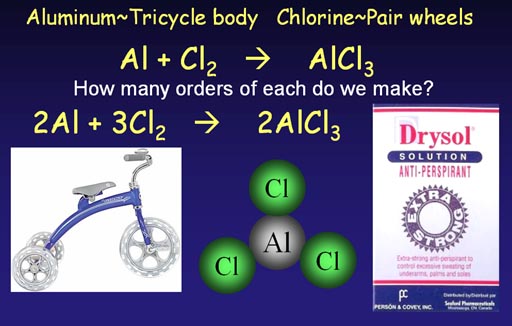
Methane and oxygen react to yield carbon dioxide and water in a 1:2:1:2 ratio.

Realize, however, that these coefficients represent the relative numbers of reactants and products, and, therefore, they may be correctly interpreted as ratios. It is common practice to use the smallest possible whole-number coefficients in a chemical equation, as is done in this example. The relative numbers of reactant and product species are represented by coefficients (numbers placed immediately to the left of each formula).Plus signs (+) separate individual reactant and product formulas, and an arrow (⟶) separates the reactant and product (left and right) sides of the equation.The substances generated by the reaction are called products, and their formulas are placed on the right sight of the equation.The substances undergoing reaction are called reactants, and their formulas are placed on the left side of the equation.This example illustrates the fundamental aspects of any chemical equation: The reaction between methane and oxygen to yield carbon dioxide and water (shown at bottom) may be represented by a chemical equation using formulas (top).

The chemical equation representing this process is provided in the upper half of Figure 1, with space-filling molecular models shown in the lower half of the figure.įigure 1. Consider as an example the reaction between one methane molecule (CH 4) and two diatomic oxygen molecules (O 2) to produce one carbon dioxide molecule (CO 2) and two water molecules (H 2O). Extending this symbolism to represent both the identities and the relative quantities of substances undergoing a chemical (or physical) change involves writing and balancing a chemical equation.

When atoms gain or lose electrons to yield ions, or combine with other atoms to form molecules, their symbols are modified or combined to generate chemical formulas that appropriately represent these species. The preceding chapter introduced the use of element symbols to represent individual atoms.


 0 kommentar(er)
0 kommentar(er)
